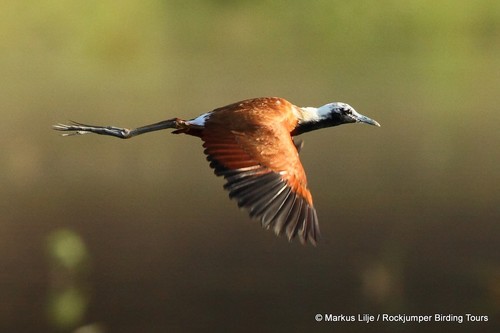
African Jacana
The African Jacana, with its long toes and vibrant plumage, elegantly strides across lily pads in African wetlands. Known for its polyandrous behavior, this bird plays a crucial role in aquatic ecosystems, controlling insect populations and pollinating water plants.
10 years
Lifespan
113.4 - 283.5 g
Weight
Length: 23 - 30 cm
Size
Blue, Black, White, Chestnut
Color
Endangered
Conservation Status
Decreasing
Population Trend
Characteristics
Actophilornis albinucha, commonly known as the African Jacana, is notable for its striking blue and white plumage, elongated toes, and distinctive white nape. It thrives in wetland habitats across sub-Saharan Africa, where it is known for its unique 'walking on water' appearance on floating vegetation.
Distribution Range of the African Jacana
Actophilornis albinucha, commonly known as the African Jacana, is native to sub-Saharan Africa. Its geographical distribution spans across countries such as Nigeria, Ethiopia, Uganda, Kenya, Tanzania, and South Africa. It is predominantly found in regions with abundant freshwater bodies.
African Jacana's Habitat
Environmental Conditions
The African Jacana inhabits wetlands, including lakes, ponds, swamps, and marshes with floating vegetation. It prefers environments with a warm tropical climate, ample water supply, and dense aquatic vegetation for nesting and feeding.
Ecological Niche
This species occupies the ecological niche of a wading bird, adapted to walking on floating vegetation due to its long toes and claws. It feeds primarily on insects and other invertebrates found among the water plants. Its role in the ecosystem includes controlling insect populations and contributing to the aquatic food web.
Copyright @ Nature Style Limited. All Rights Reserved.
 English
English